Notre Dame’s e-NABLE group had searched in vain for nearly a year for a child in need of an artificial hand. The informal student club, which a few dozen engineers formed to create 3D printed hands, had gone dormant.
Then in February, Michael Skinner needed a ride home from a formal event during Junior Parents Weekend and called for an Uber. Driver Doug Anderson picked up Skinner and his mother. An outgoing New Jersey native, Skinner asked Anderson about his family.
Skinner couldn’t believe his luck when Anderson told him about adopting a daughter from China who was born with half a palm and only one finger on each hand.
Neither could Anderson.
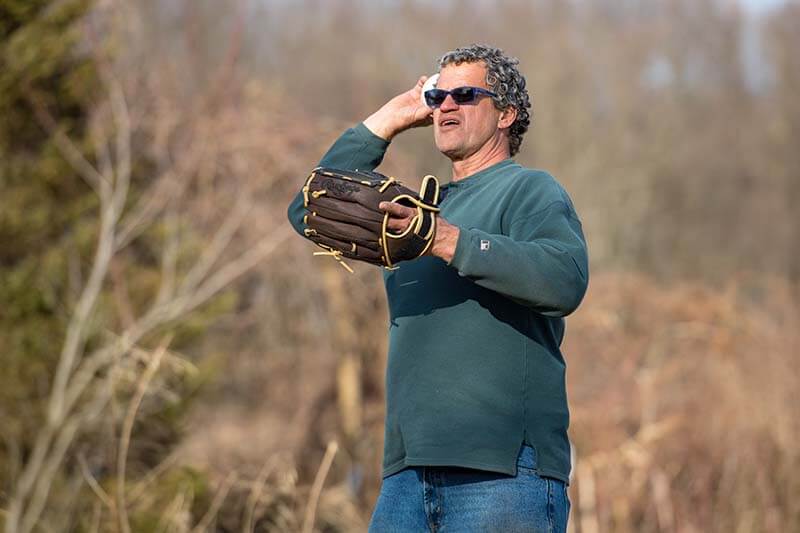
Anderson, 58, a public school teacher, retired early to take care of his four adopted children, including three with special needs. He drives for Uber for the extra cash and because he likes to socialize. He and his wife, Mary, had looked into prosthetics for their 11-year-old, Tori, but several hospitals said they weren’t practical for a growing child: too expensive and quickly outgrown. Then Skinner landed in his car.
“I’m a very spiritual man,” Anderson says, “and I think that God absolutely has his hand in all of this kind of stuff. Mary and I have been … not frustrated … but wishing as parents that we could do a little bit more. So that God made it all line up like that, that’s no coincidence for me.”
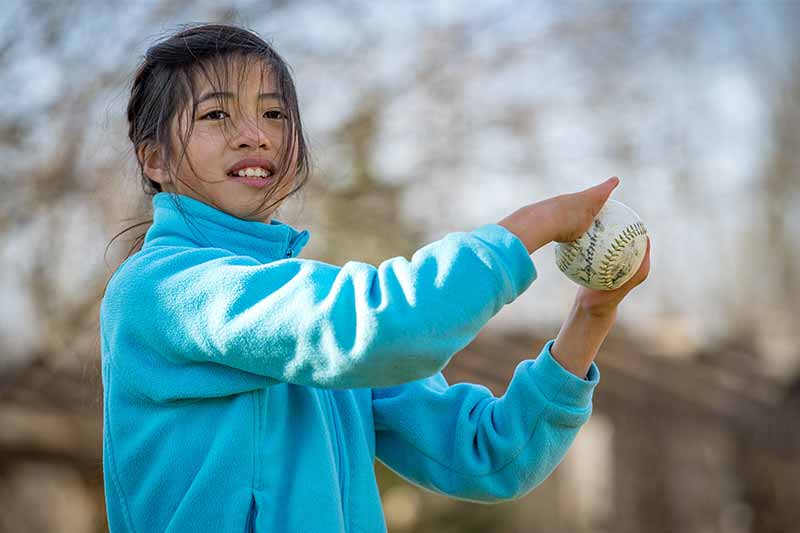
Anderson says Tori will try anything. She plays soccer. She holds a pencil in her two fingers and has good handwriting. She plays softball with her older sisters, catching with a mitt then taking it off to grip the ball with both fingers.
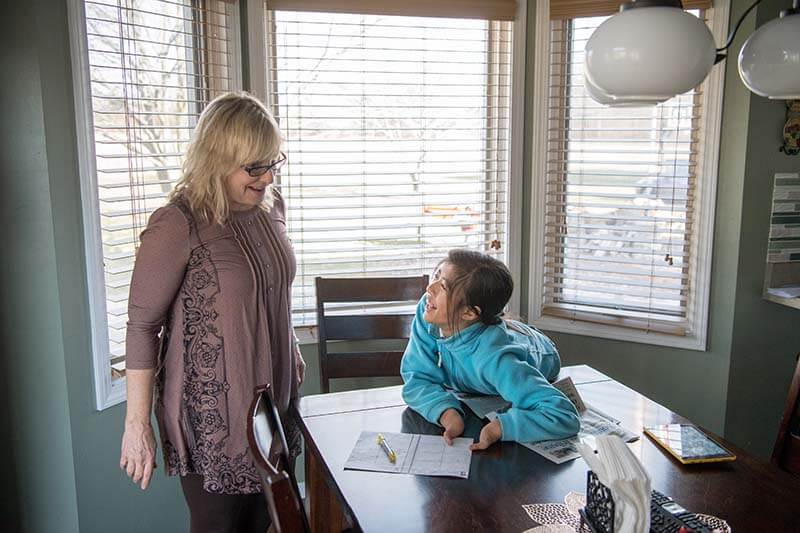
But it can be hard to get the paper to stay still when she writes. And her new bike has hand brakes. An artificial hand would make throwing easier. Tori is a little shy, but she says she’s willing to give the colorful contraption a try.
“If there’s three or four things she can do with it that she can’t do now, that would be great,” says Cole Grabowski, the e-NABLE group’s president. “It’s good for us because it’s hands-on problem solving. It’s a great opportunity that I’m excited about.”
e-NABLE's Origin
e-NABLE started in 2011 when Ivan Owen, who owned a special effects company, created a functional metal hand to wear as a prop to a sci-fi convention. His short video of the working hand led to an email from South African carpenter Richard Van As, who had lost his fingers in a woodworking accident. Van As had been working on his own prototypes after learning that a prosthetic hand can cost $10,000 or more.
The two men collaborated on various designs through email and Skype. They decided from the start that any result would be posted open-source on the internet rather than patented to create a for-profit company.
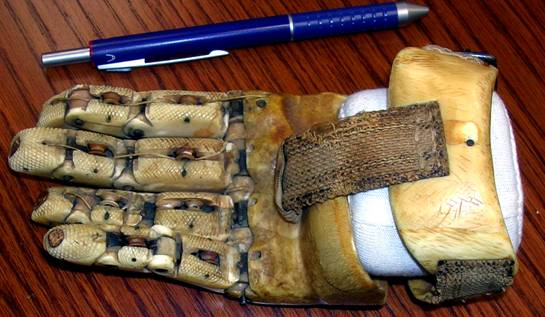
Researching prosthetic devices, Ivan found an 1845 design that an Australian dentist used to construct the Corporal Coles hand out of whalebone, cables and pulleys. It would become their model.
Meanwhile, a South African woman contacted Van As to see if his homemade prosthetic could help her 5-year-old son, Liam, who was born with no fingers on his right hand.
After creating a prototype for Liam, the “Robohand” creators realized he would quickly outgrow it. Ivan learned how to use 3D printing software and published the still-clunky design files in January 2013 so that others could download and print their own devices.
A fan of Liam’s video started a Google+ group and map of volunteers printing hands for less than $50 each. Ivan’s wife, Jen, started a blog to tell the story, and the publicity helped the e-NABLE online community spread across the world, leading to collaborative and better designs. Within two years, e-NABLE grew from 100 members to nearly 7,000 worldwide.
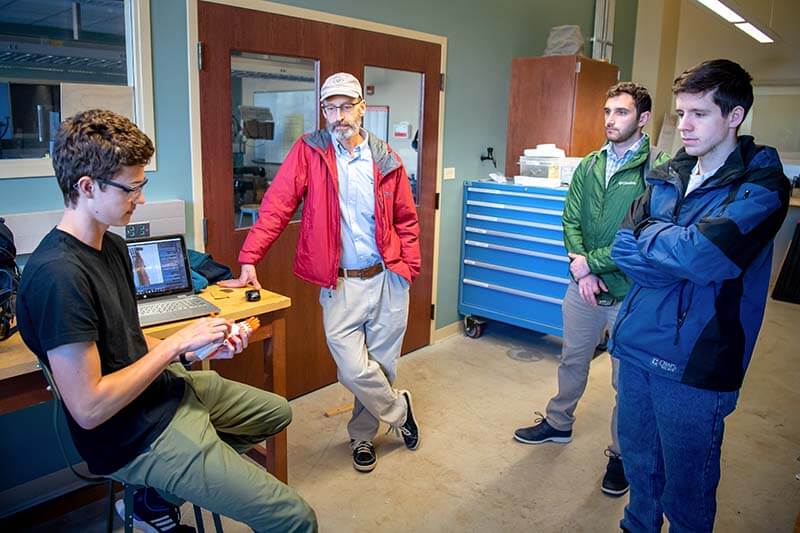
ND On board
Kelly Pacifico, a Notre Dame engineering student, heard about e-NABLE in 2016 and did some research online. She was also interested in 3D printing and applying her skills to a cause.
“I thought the mission of the organization aligned perfectly with Notre Dame’s mission statement,” she says, “and I thought it would be a great way to get students more involved on campus in both the engineering and service aspect.”
Pacifico approached Richard Strebinger, an associate professional specialist in the Department of Aerospace and Mechanical Engineering, who gladly agreed to help start a campus chapter. She recruited her engineering friends at first and then spoke in front of classes. The campus group started in August 2016 and became a recognized e-NABLE chapter that November. They printed a half dozen demo hands and attracted more volunteers with a presentation to freshmen at an industry day held by the Department of Aerospace and Mechanical Engineering.
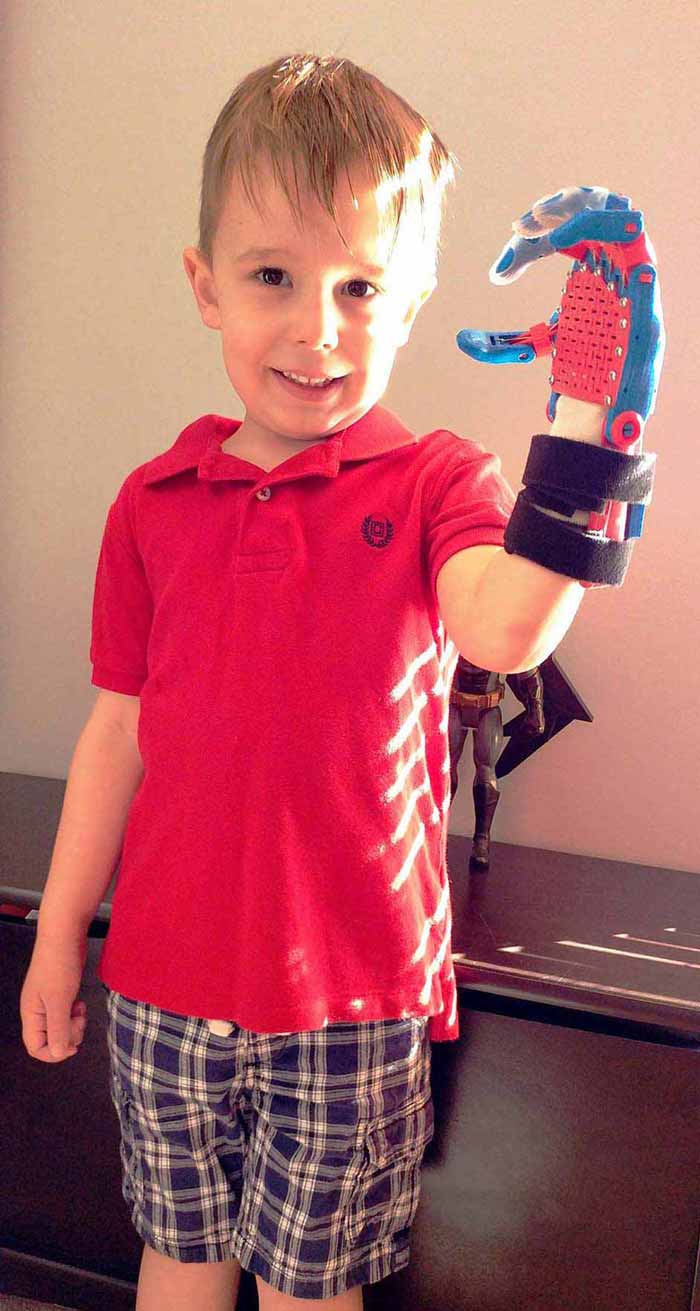
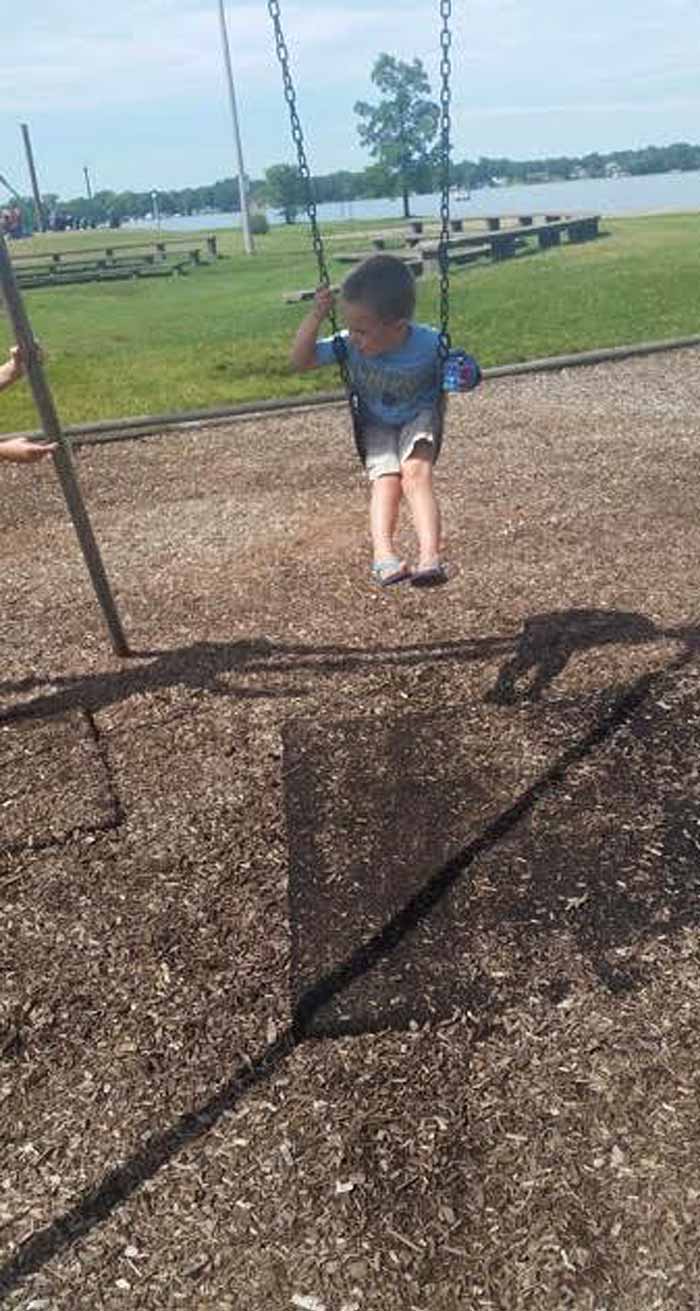
The Lewis family from Warsaw, Indiana, learned about the Notre Dame chapter through Helping Hands Midwest, a foundation for families of children with limb differences. They contacted Pacifico about building a left hand for their 3-year-old son, Owen. Using the family’s measurements and pictures, club members sized a Phoenix hand with a computer program and custom-built it for Owen.
The club sent the hand to Owen in spring 2017 and has kept in contact with the Lewis family about his progress and need for a larger version. The family hopes to eventually purchase a more advanced prosthetic, but the e-NABLE version helps with the physical therapy that will prepare him for a permanent solution.
“We have been thoroughly blessed by the opportunities provided through the Notre Dame e-NABLE chapter,” David Lewis wrote in an email. “Owen loves his hand, which he calls his ‘robot hand!’ It has completely changed his ability to accomplish everyday household tasks like eating and dressing. He even used it to go fishing yesterday.”
Pacifico was thrilled to see a picture of Owen using the hand on a swing and to spread the word about e-NABLE’s work. “I truly believe what we do is for an incredible cause,” she says.
Now in her senior year, she turned over the daily operation to club vice president Cole Grabowski, a junior from Cincinnati. With Strebinger as moderator, the chapter applied to become a recognized campus club. They would become a probationary club in March, but what the members needed most was another client, which eluded them throughout the fall of 2017. They weren’t sure how to get the word out to families in need of help.
“We could have done a hand and sent it by mail, but it’s so much more meaningful to interact with the recipient,” Grabowski says.
Tori
Doug Anderson was born in South Bend and went to LaSalle High School. He said he worked at a machine shop and a sand and gravel company. He has two children from a first marriage, including a son of the same name who is 39.
He remarried in 1993 to Mary Wehr, who taught in South Bend schools for 36 years and is now at Success Academy. He went back and received his degree and also became a teacher, most recently at Clay Intermediate School. Mary helped him raise his kids, but the couple wasn’t able to have their own.
“You could just tell over the years, at Mother’s Day or whatever, it was just hard on her,” he says. “She talked about adoption. I wasn’t as willing as I should have been for a while but finally said, ‘OK, let’s make this happen.’”
They decided on international adoption because they worried about parents changing their mind and wanting their child back. Many of the girls abandoned in China are dropped off at a hospital or police station, he said, so the international adoption agency didn’t provide much information on their backgrounds.
In 2005, the couple adopted Sharon, a 14-month-old who is now 14. Doug thought that would be the only one, but Mary kept seeing pictures of kids online who needed parents.
“The process changed from 14 months from start to finish with Sharon to … we were three years into the second one,” he says. “And it still looked like it could be two or three years for non-special needs kids. So we changed to special needs kids.”
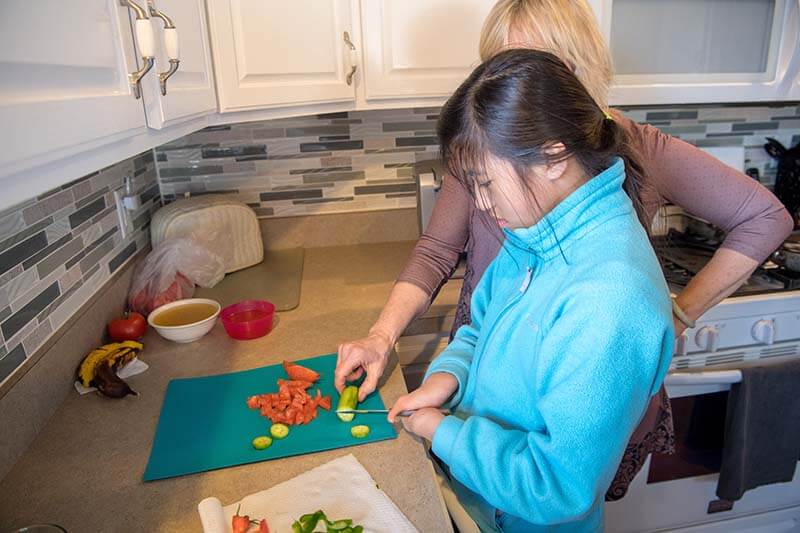
Tori squirms around like a bored pre-teen while Anderson provides this background. But she perks up when he speaks of how Mary found a video of Tori using her two fingers to pick things up and feed herself. Her condition is called monodactyly, he says. “That little video kind of hooked us both on Tori.”
“Is that why you got me, because of my fingers?” she interrupts.
“We got you because we love you,” Anderson responds.
“You’re our daughter, and God wanted us to adopt you. You just happened to have different hands and feet, but that doesn’t matter. It doesn’t change anything. We love you just the way you are. We’re just trying to see if this is something that will help you a little bit.”
Tori agrees that she would like to be able to use the hand brakes on her new bike or hold a softball bat rather than cradle it in her arms. Anderson gets back to his story. In 2009, the family adopted 2-year-old Rebecca, who is now 9. The next year, Tori joined them at age 5. Two years later came Joanna, who is now 16.
Anderson says he decided to become “Mr. Mom” in 2014 to make the house run better and make sure the kids get to and from school without long bus rides. The family went to two different children’s hospitals to talk about prosthetics. Both said they can be expensive and cumbersome, and noted that Tori has learned to do nearly everything for herself. One mentioned the 3D printed hands, so the idea had been planted when Michael Skinner said his group wanted to help.
Makers
Grabowski first met Tori and the Andersons in mid-March in Stinson-Remick Hall and showed her a completed prototype in pink and white. Tori chose purple as her palm color with blue fingers as accents. A week later, they discuss what she hopes to do with her new hand.
Grabowski explains how the wrist section, called the gauntlet, can be custom-fit for her and made more comfortable. He shows how flexing the wrist makes the fingers curl. They can also add rubber fingertip grips, the same kind that bank tellers use to count money.
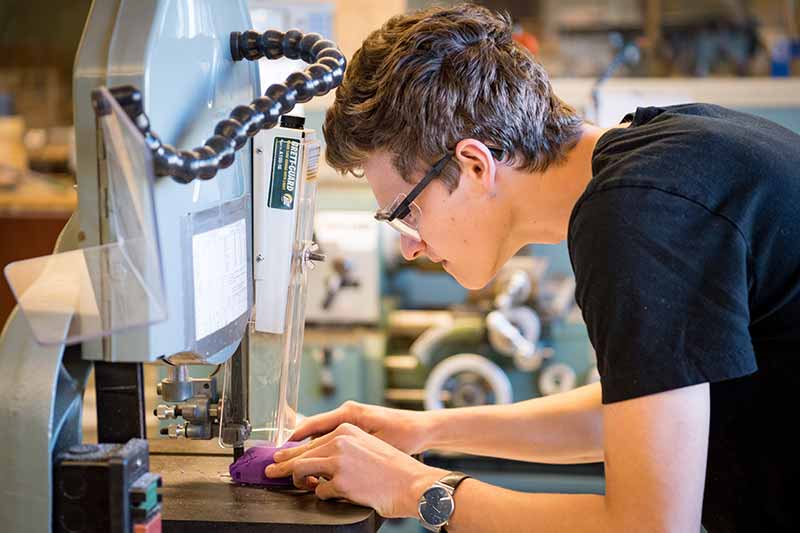
Strebinger had hoped to access the software so the students could learn how to manipulate the design to custom-make Tori’s hand. But the e-NABLE software can only be sized, not altered. So Grabowski got himself certified on a band saw in the Stinson-Remick workshop.
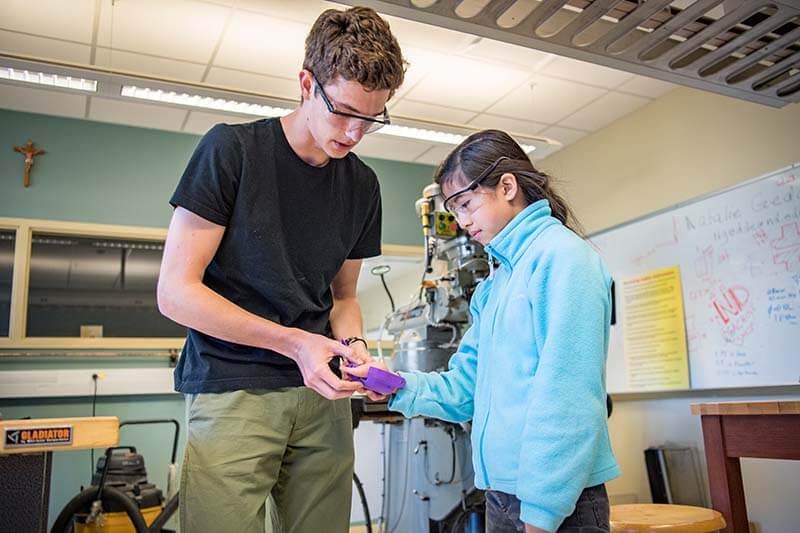
Tori watches him cut the plastic purple palms, which took about 13 hours each to print, for her pinkie fingers to poke through. She pushes up her safety goggles with one finger and brushes her hair back with the other. She places her hand in each freshly cut palm. “It’s not poking you?” Grabowski asks. She shakes her head.
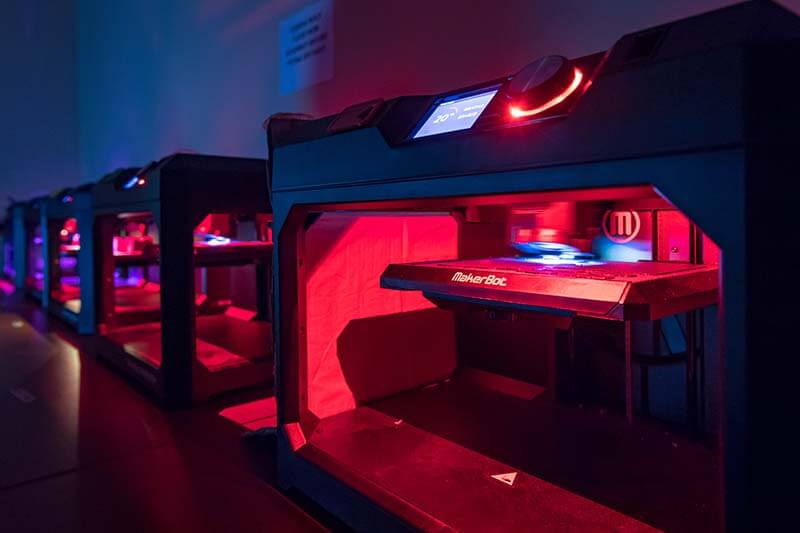
The next day, Grabowski and Strebinger meet the Andersons at Fitzpatrick Hall to begin printing the fingers, gauntlet and all the connecting pins. In a basement MakerSpace, five MakerBot 3D printers line one wall, three whirring away on other projects. Grabowski shows Tori some cool projects other students have made: a ship, train, lion, rhino and more. She touches each object carefully.
A time-lapse video speeds up the 9.5-hour 3D printing process. Fingers emerge on the left, pins and connectors in front, and the gauntlet pieces on the right.
Strebinger changes the filament, a loop of thin plastic line on a cable wheel, to blue. Grabowski puts in a flash drive and starts the print process, which will take nine and half hours. On top, the filament feeds into an extruder, which heats the plastic coming out to 419 degrees. The platform raises up to the extruder, which moves around and drizzles out molten plastic.
“The machine prints in layers, one slice at a time,” Strebinger says. “First, it prints a solid base to have something to attach to. It always reminds me of decorating in fine icing on a cake.”
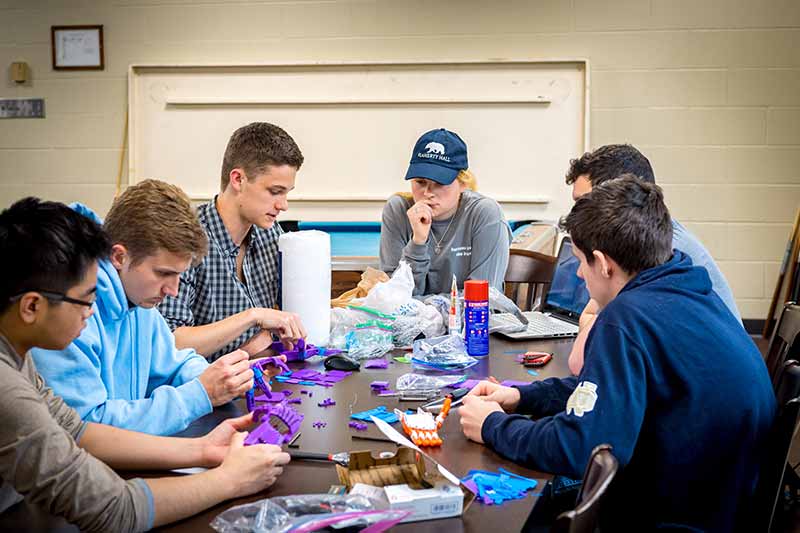
The next day, six engineers sit in Knott Hall’s common area on a Saturday afternoon to assemble the hands. Several of the connecting pins are difficult to pry off the plastic base and break in the process. Grabowski shows the others how to pin the finger joints together and string the fishing line cables from the gauntlet through thin holes in the palm to the fingers.
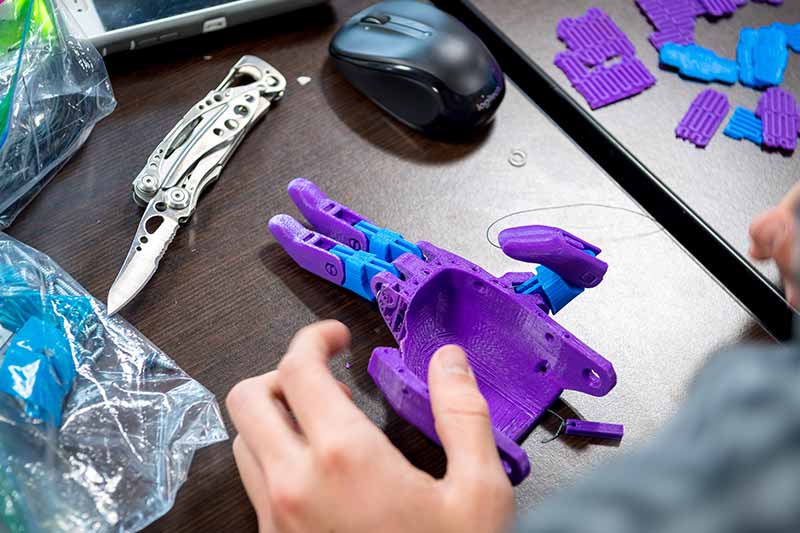
Skinner wires a paper clip into a hole where a pin that had broken should go, and it holds in place temporarily. “You are an engineer,” Grabowski tells him. “Strebinger would be so proud.”
Grabowski bought different fillers to experiment with: silicon, dish foam roll, Loctite foam and wood filler. A few of the students go outside to test the fillers for weight, shape and comfort. They are only able to assemble about 70 percent of each hand, but they re-print the broken pins and finish the hands over the next week.

1. Soft fingertip grips, the same kind that bank tellers use to count money.
2. Orthodontic rubber bands connect the finger joints and can be replaced easily.
3. The group used a band saw to customize the design for Tori's pinkie fingers. Foam padding lines the inside of the palm to improve comfort.
4. The gauntlet allows the user to control the hand by flexing the wrist. Fishing wire runs from the gauntlet through the palm to make the fingers curl.
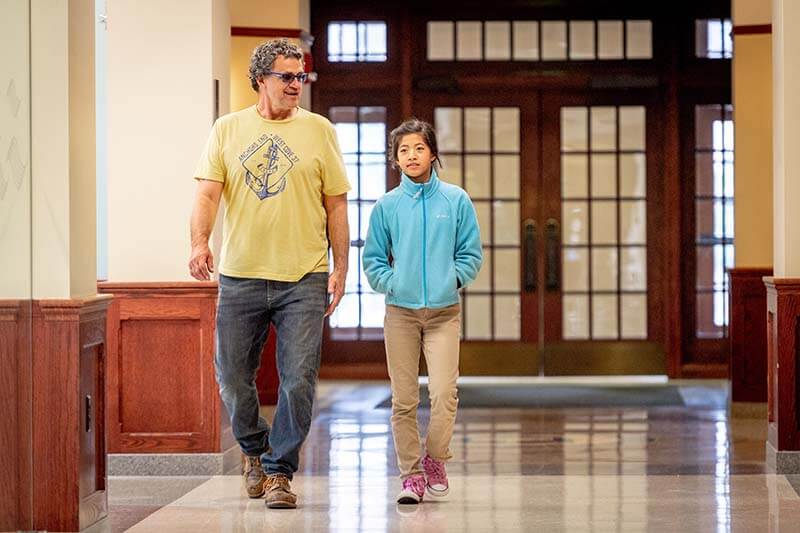
Delivery
The final fitting day has arrived. The e-NABLE team meets Tori and Doug Anderson in Stinson-Remick Hall, where the sign behind a table in the atrium reads, “Engineering the Future: The dream upon which Rev. Edward Sorin founded the University of Notre Dame is as alive and relevant today as it was in 1842.”
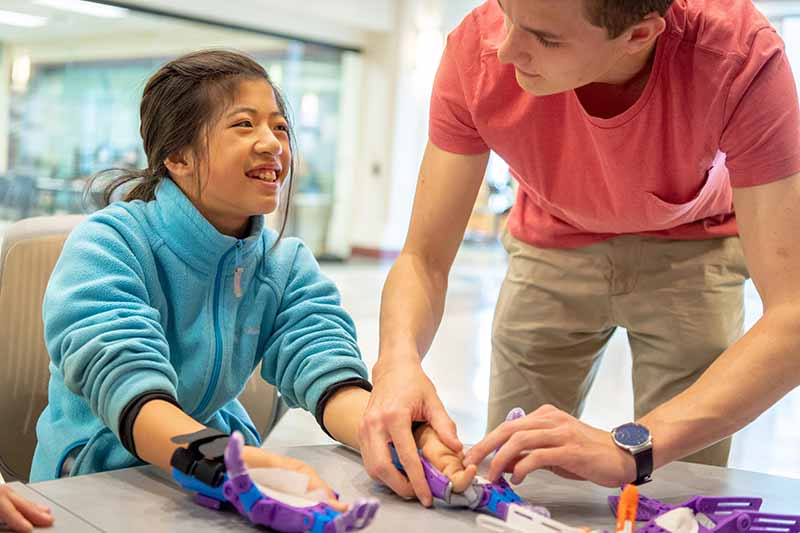
“Do you feel like a superhero?” Grabowski asks. Tori, looking nervous and overwhelmed, shakes her head no. “Well, does it look cool?” he tries. This time, she agrees.
He shows her the plastic palm pieces that will be custom fit. “When we heat this up with our super-secret science hair dryer, it can bend and shape to your hand,” he says. “We’ll use Model Magic clay and foam to fill any gaps.”
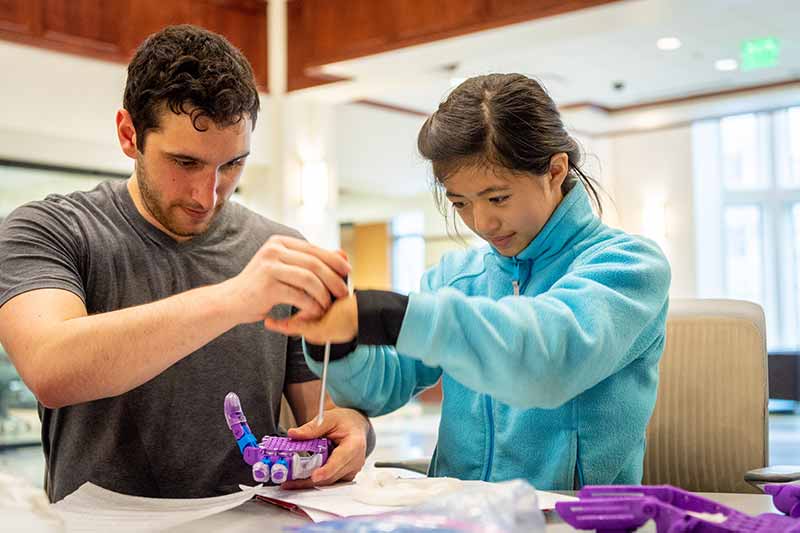
Skinner finally gets a laugh out of Tori when he pretends to cut his finger while trimming the foam. Grabowski trims and repeatedly heats the palm piece, molding it with his fingers. Other students screw the palm in or glue pieces of foam into place. Skinner holds one hand steady as Tori wraps her two fingers around a screwdriver to tighten the last screw.
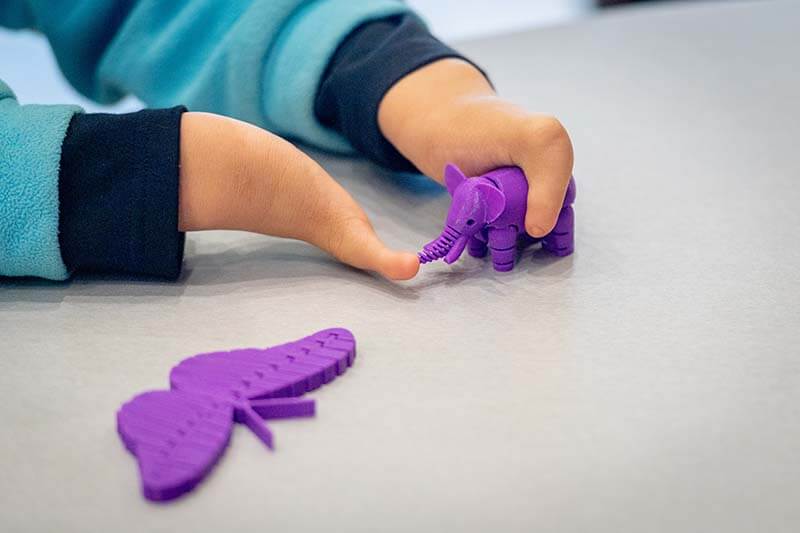
While the final adjustments are made, Tori rolls around the atrium on a wheeled chair and plays with 3D printed toys — a butterfly and elephant — that the students made for her. She and Skinner roll up the leftover Model Magic clay into a ball and play catch until the whole group joins. She uses two hands to throw and pins it to her chest to catch.
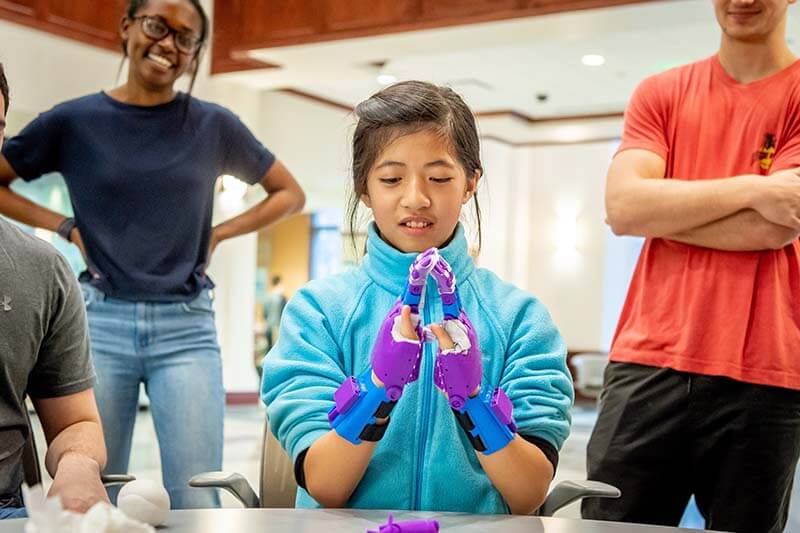
The right hand finished, Tori flexes her wrist and the fingers curl together. Her eyes widen. She looks a little astonished, a distant cousin to those viral videos where a deaf child gets cochlear implants and hears sound for the very first time.
“Try to grab something,” Grabowski says. Tori shakes her head. She doesn’t want to fail in front of so many older students. But as they make adjustments to the other hand, she keeps staring and flexing, first grabbing her other wrist and finally the toy elephant. The e-NABLE team erupts into cheers.
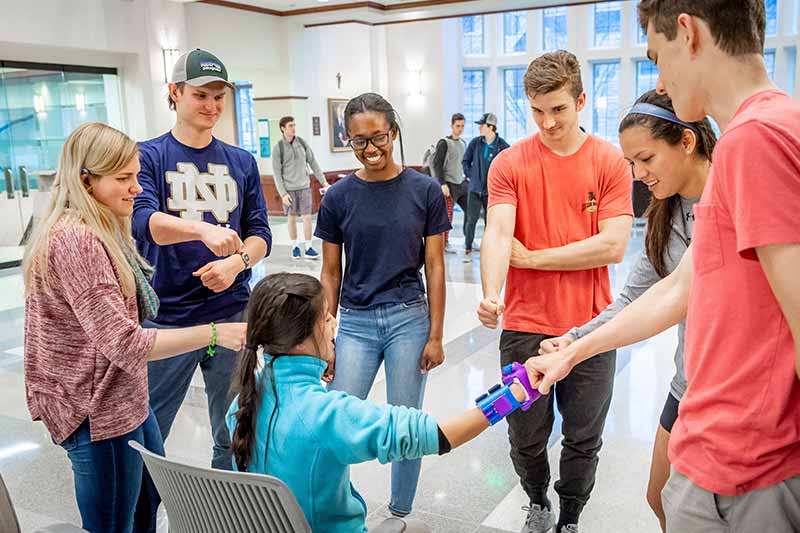
Quickly gaining confidence, she shakes her father’s hand. She fist bumps with the ND students. When the second one is ready, she raises it up and whoops.
“It’ll take a day for the glue and Model Magic to fully dry, so I wouldn’t want you to climb on any monkey bars tonight,” Grabowski jokes. “People say it takes a month of practice, so you could try to sweep the house because you like chores so much.”
Tori walks away with her new hands in a plastic bag. The next morning, she can’t wait to show them to her teachers and classmates, who call them her robot hands. “She was so excited when she came home,” Mary Wehr Anderson says. “She was fist-bumping everyone.”
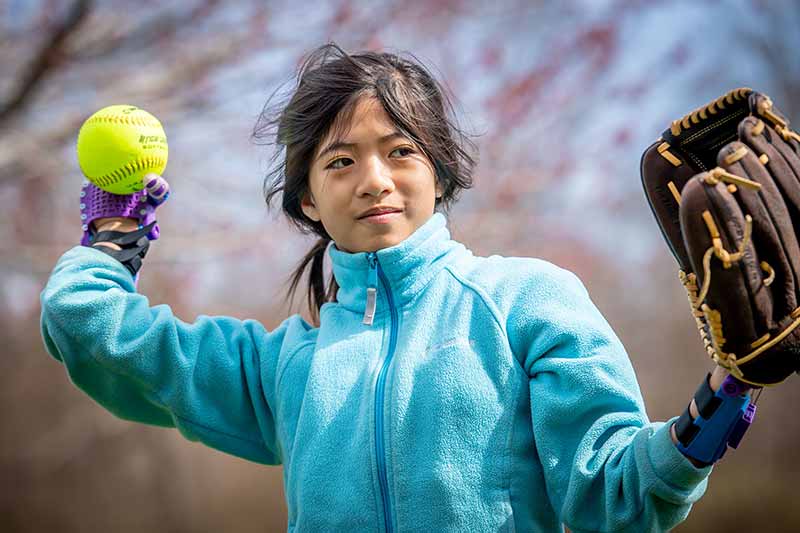
Two weeks later, Tori plays softball in the family’s backyard with her sister Rebecca. Their father throws them underhand pitches to practice hitting, but holding the bat is still difficult.
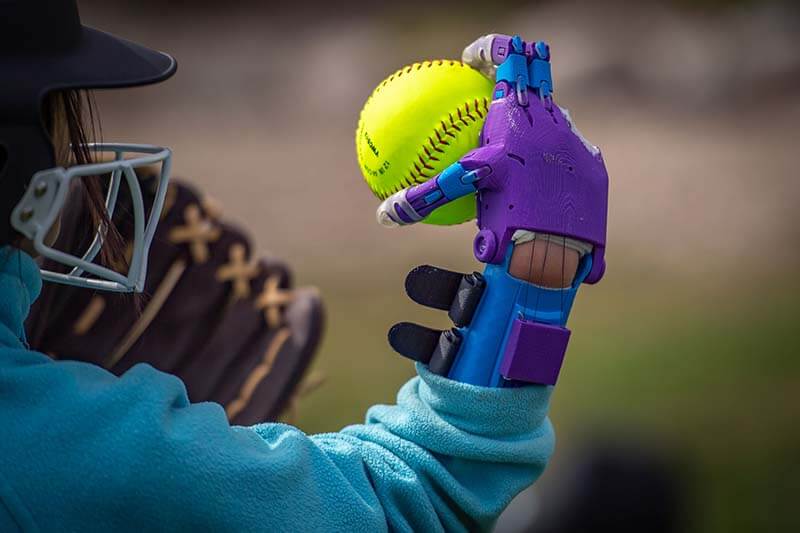
Other unexpected challenges arise. Tori has to think for the first time about whether she is right- or left-handed, and she has to learn a new, one-armed throwing motion. Still, she no longer has to remove the glove to throw, and her skills improve steadily.
Mary Wehr Anderson says she is thankful that the right engineering student got into her husband’s Uber car, marveling at the luck involved.
At Notre Dame, Skinner notes that the serendipitous meeting happened because he didn’t know a parents’ event was formal dress, a mistake that got him an earful from his own mother and made them leave early.
“Things happen for a reason, I guess,” he said. “All because I didn’t wear a tie.”
Produced by the Office of Public Affairs and Communications
- Writer: Brendan O'Shaughnessy
- Creative: Taylor Packet & Olivia Rotolo
- Developer: Shawn Maust
- Photography: Matt Cashore